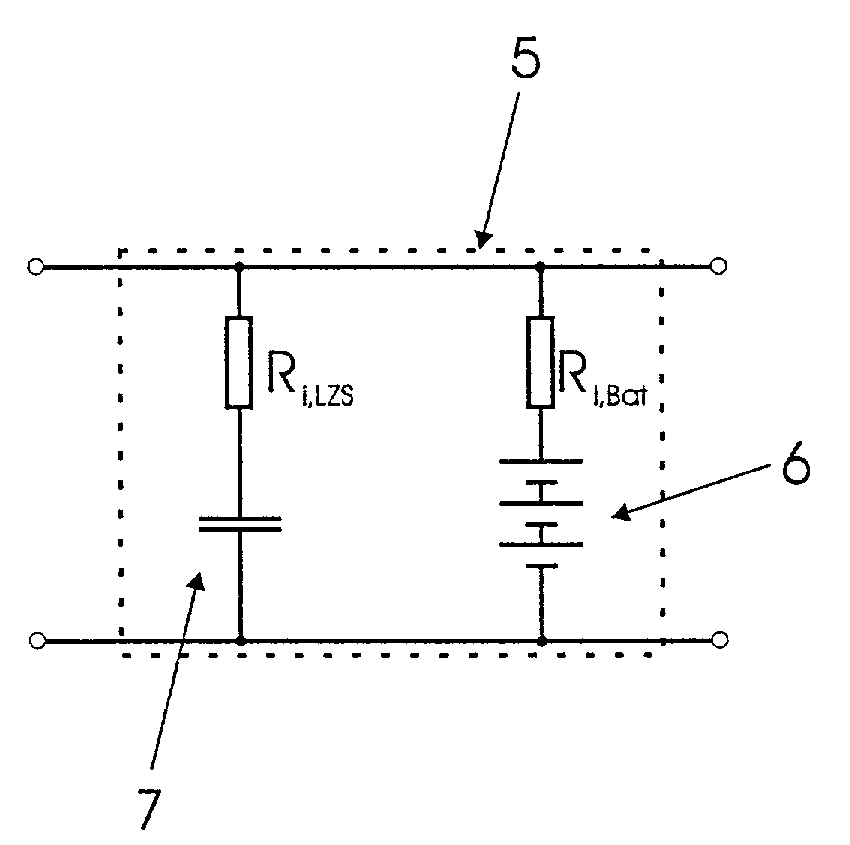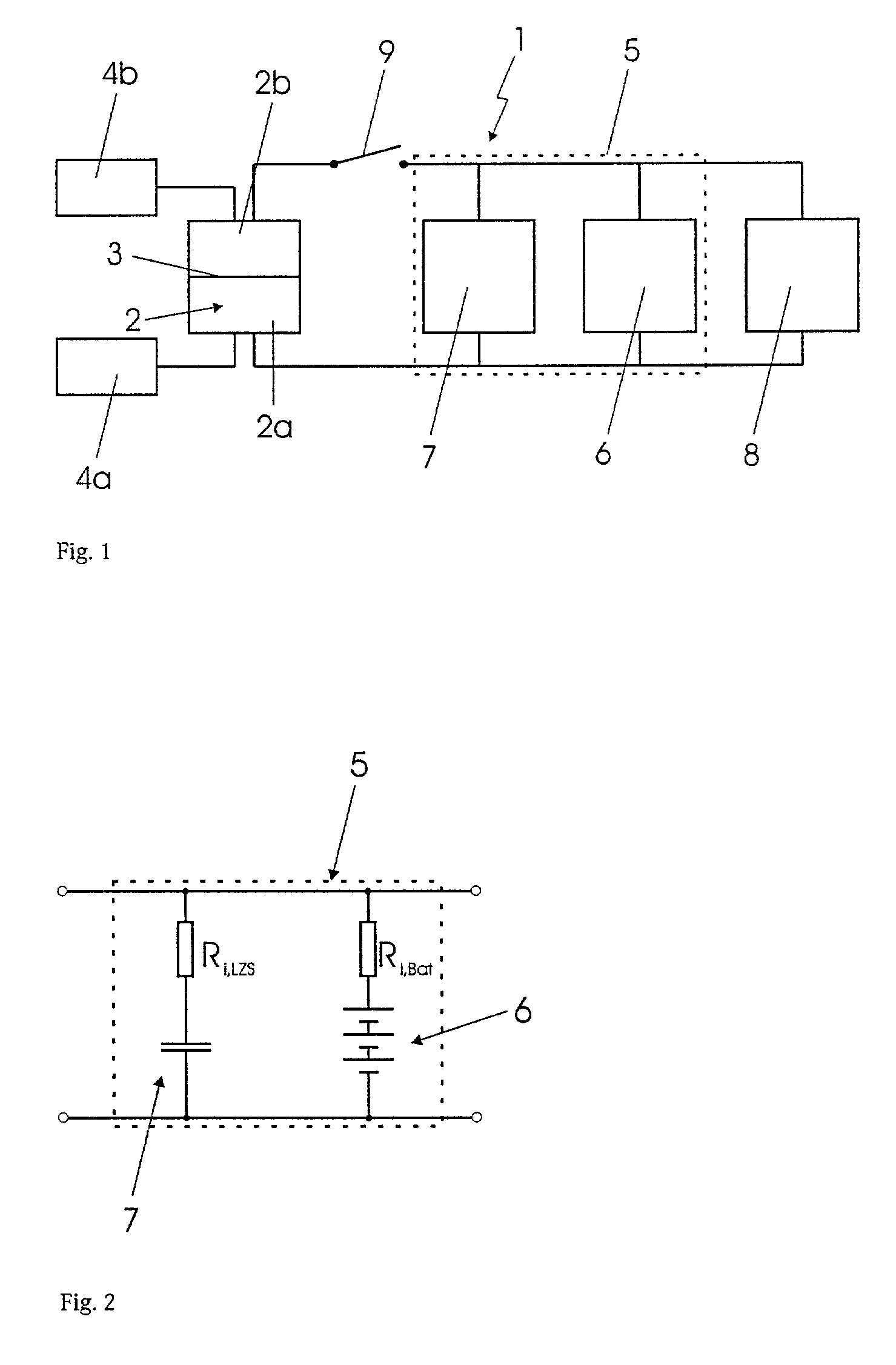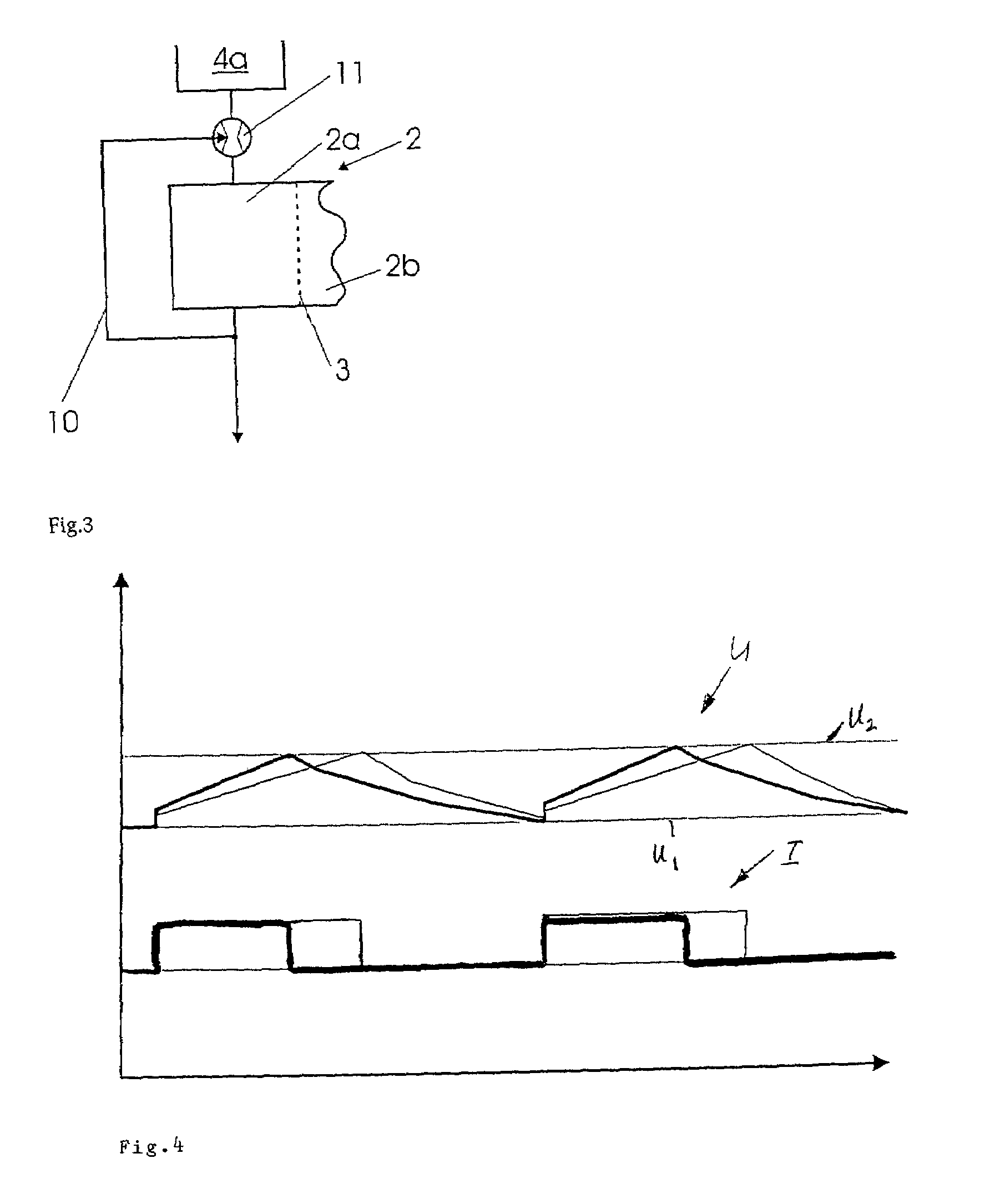Fuel cell system
a fuel cell and system technology, applied in the field of fuel cell systems, can solve the problems of reducing the power affecting the production efficiency of the system, and affecting the service/maintenance of the secondary cell, so as to achieve the effect of rugged and reliable, and reducing the internal resistan
- Summary
- Abstract
- Description
- Claims
- Application Information
AI Technical Summary
Benefits of technology
Problems solved by technology
Method used
Image
Examples
Embodiment Construction
[0021]FIG. 1 illustrates the underlying principle of the design of a fuel-cell system 1 according to the present invention. Fuel-cell system 1 has a fuel cell 2, including an anode region 2a and a cathode region 2b. Here, anode region 2a of fuel cell 2 is separated by a proton-exchange membrane 3 (PEM) from cathode region 2b of fuel cell 2. Besides being a single cell, fuel cell 2 is defined to include a fuel-cell stack as well. In addition to PEM fuel cell 2 selected for the exemplary embodiment, many other types of fuel cells 2 are, of course, also conceivable in connection with the designs described here, such as phosphoric acid fuel cells, direct methanol fuel cells, or the like.
[0022]Anode region 2a is coupled via a device 4a for supplying fuel cell 2 with operating agents, here, in particular, a gas-generating system 4a, through which anode region 2a of fuel cell 2 is able to be supplied with the operating agent it requires, in the context of a PEM fuel cell, generally with hy...
PUM
| Property | Measurement | Unit |
|---|---|---|
| internal resistance Ri | aaaaa | aaaaa |
| internal resistance Ri | aaaaa | aaaaa |
| voltage | aaaaa | aaaaa |
Abstract
Description
Claims
Application Information
 Login to View More
Login to View More - R&D
- Intellectual Property
- Life Sciences
- Materials
- Tech Scout
- Unparalleled Data Quality
- Higher Quality Content
- 60% Fewer Hallucinations
Browse by: Latest US Patents, China's latest patents, Technical Efficacy Thesaurus, Application Domain, Technology Topic, Popular Technical Reports.
© 2025 PatSnap. All rights reserved.Legal|Privacy policy|Modern Slavery Act Transparency Statement|Sitemap|About US| Contact US: help@patsnap.com



